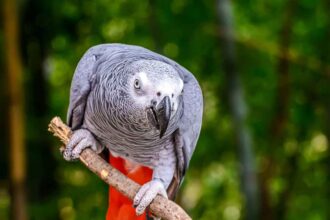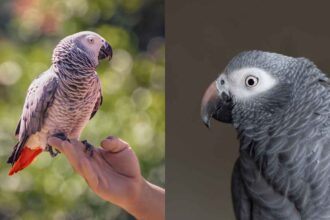Among the most intriguing and deadly reptiles in Africa is the Mozambique spitting cobra, Naja mossambica. Respected and feared equally for its unique defense action of spewing poison, this cobra Though well-known, the Mozambique spitting cobra is very important in its habitat as it helps to maintain the equilibrium there. This paper explores the behavior, habitat, nutrition, and human contact of the Mozambique spitting cobra, therefore providing a better knowledge of this misunderstood animal.

Physical traits
Though some may exceed five feet, the Mozambique spitting cobra is medium-sized, averaging three to four feet in length. It is nimble and thin, with a clear hood that opens upon danger. Often with black-edged scales, its hue is mostly light to dark brown or olive, which helps it to fit naturally into its surroundings. Usually lighter, the underneath may include traces of pink, yellow, or peach. When the hood of this cobra is flared, its remarkable look is enhanced by its black bars or blotches on the neck.
This cobra distinguishes itself mostly from other cobras by its extraordinary precision in spitting poison. With their developed tiny holes at the front of its fangs, which can reach targets up to 6 to 9 feet distant, its venom glands enable their ejection of poison. This adaptation is very successful in discouraging predators and protecting itself from dangers.
| Feature | Description |
|---|---|
| Length | Typically 3 to 4 feet, up to 5 feet |
| Coloration | Light to dark brown or olive with black-edged scales, lighter underbelly, often pink or yellow |
| Hood | Expands when threatened, features dark bars on throat |
| Venom Spitting Range | Can spit venom up to 6 to 9 feet |
| Venom Composition | Neurotoxins and cytotoxins, causing pain, swelling, blindness (if spat into eyes), and tissue damage |
| Defensive Behavior | Spits venom when threatened, raises body and flares hood |
| Bite Effects | Neurotoxins disrupt nervous system; cytotoxins cause tissue necrosis |
| Preferred Action | Avoids confrontation, only attacks when threatened |
Habitat & Distribution
Widely scattered throughout southern Africa, the Mozambique spitting cobra ranges from Mozambique, Zimbabwe, South Africa, Swaziland, Namibia, and areas of Botswana. From savannas and grasslands to woods and shrublands, it finds success in a range of environments. Although this species enjoys surroundings close to water sources, including rivers and wetlands, it is also found in dry surroundings.
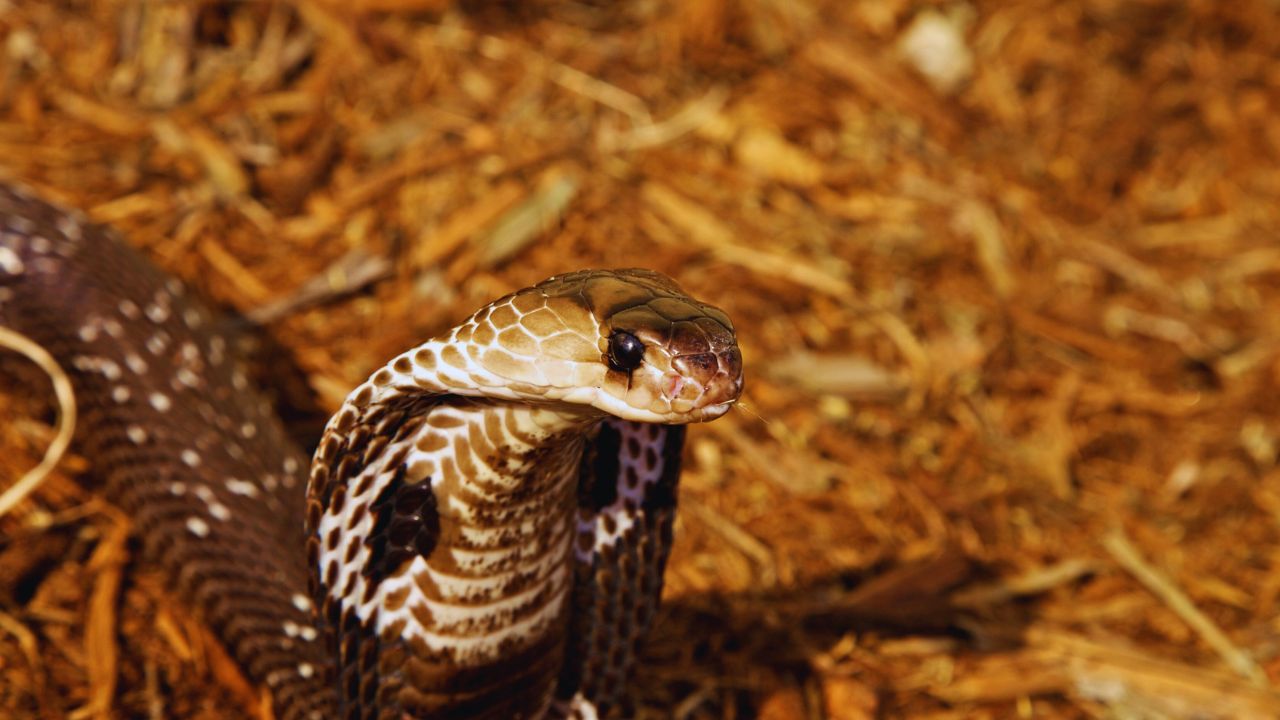
The Mozambique spitting cobra is a strong species able to survive in a variety of climatic conditions as it is flexible enough to fit many environments. But it prefers areas with intermediate foliage cover where it can hunt and hide, thereby avoiding very parched deserts or lush rainforests. During the day, the snake often hides in hollow logs, rock crevices, and termite mounds; it becomes more active in the cooler hours of the evening and early morning.
Habitat and Behavior
| Feature | Description |
|---|---|
| Geographical Range | Southern Africa: Mozambique, Zimbabwe, South Africa, Namibia, Botswana, Swaziland |
| Preferred Habitat | Savannas, grasslands, woodlands, shrublands, and areas near water sources |
| Environmental Adaptability | Thrives in moderate vegetation, avoids extreme deserts and dense rainforests |
| Shelter | Hides in termite mounds, rock crevices, and hollow logs |
| Active Time | Diurnal and nocturnal depending on conditions |
| Defensive Behavior | Prefers to flee, spits venom when threatened, will bite if spitting does not deter threat |
Behavior and venomousness
Depending on surroundings and food availability, the Mozambique spitting cobra is either diurnal or nocturnal. When trapped or threatened, it may be somewhat hostile and extremely vigilant. The most remarkable defensive action of this cobra is its capacity to spew poison straight onto an aggressor’s eyes. Feeling threatened, it will elevate the front section of its body, flare its hood, and launch venom with excellent accuracy toward the supposed attacker. If its venom gets into contact with the eyes, it may cause extreme discomfort, swelling, and possibly temporary or permanent blindness, as it mostly consists of neurotoxic and cytotoxic toxins.
The snake does not rely only on spitting activity for protection. Should its first venom spit fail to discourage a danger, the Mozambique-spitting cobra will turn to biting and inject its poison straight through its fangs. While the cytotoxic component damages localised tissue, the neurotoxic component of the venom influences the neurological system of the victim. If neglected in extreme situations, bites from this cobra may cause great tissue necrosis and, in fact, death.
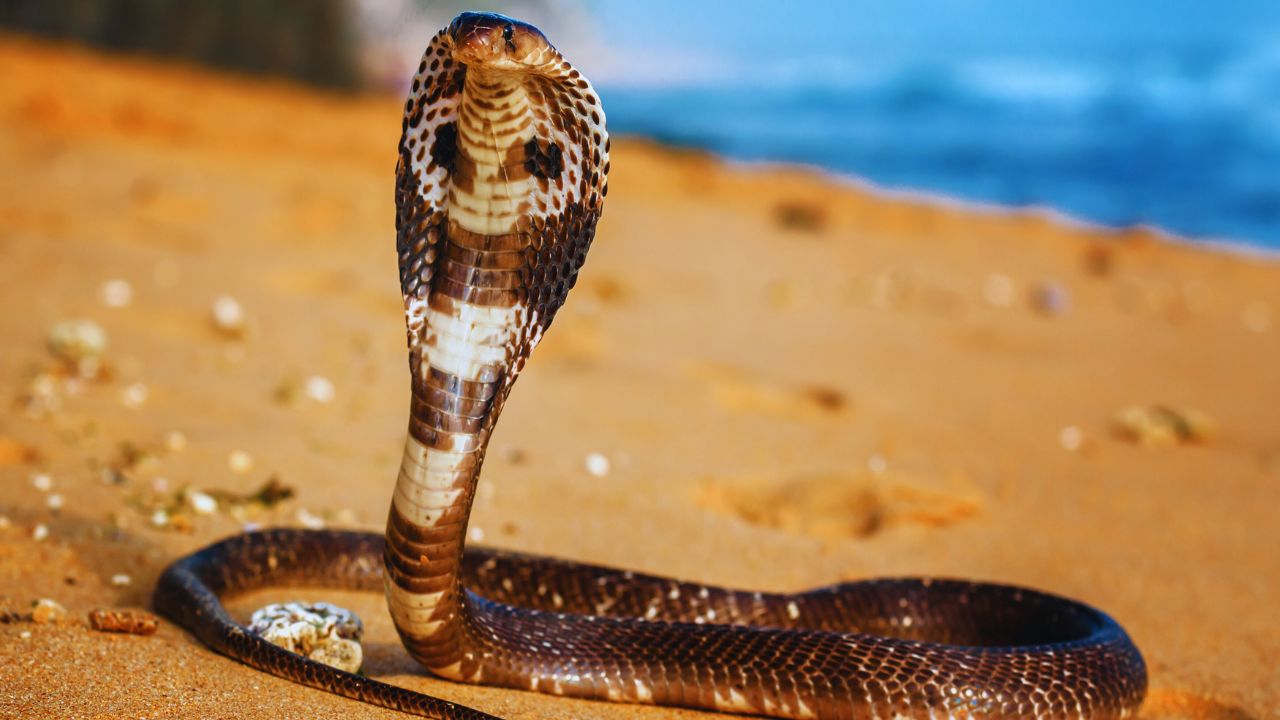
Though known for its aggressiveness, the Mozambique spitting cobra usually wants to avoid conflict. It will only attack if it believes there is no other choice, just as many snakes do. Most usually, it will try to run from danger before turning to bite or venom-spitting.
Nutrition and Hunting
Eating a broad spectrum of food, including small mammals, birds, amphibians, and other reptiles, the Mozambique spitting cobra is an opportunistic predator. It really likes rodents, which account for a good amount of its diet. Given its inclination for rodents, the cobra is a great help in reducing the pest count in its natural environment.
Combining active hunting techniques with ambush, this cobra Usually hiding behind rocks or plants, it quietly waits to strike its victim. Its deadly bite immobilizes or kills the creature within seconds as it reaches its target. Then the snake consumes its food whole, depending on its flexible jaw to eat creatures much bigger than its head.
Apart from small animals, the Mozambique spitting cobra is reported to eat other snakes, including dangerous ones. This cannibalistic behavior emphasizes how flexible a predator the cobra is. Depending on the food availability in its surroundings, it may also eat frogs, toads, and even bird eggs.
Diet and Human Interaction
| Feature | Description |
|---|---|
| Diet | Small mammals (especially rodents), birds, amphibians, reptiles (including snakes), frogs, bird eggs |
| Hunting Strategy | Ambush predator, waits for prey and strikes with venom, can swallow larger prey whole |
| Role in Ecosystem | Helps control rodent populations, valuable for pest control |
| Human Interaction | Commonly encountered near settlements, bites and venom spit incidents reported |
| Bite Symptoms | Pain, swelling, paralysis, and tissue necrosis, can lead to amputation if untreated |
| Venom in Eyes | Causes blindness if untreated; immediate rinsing with water is essential |
| Conservation Status | Not endangered, but habitat destruction and human conflict pose future risks |
| Role in Agriculture | Helps in controlling pests like rats, which affect crops and human health |
Dealing with People
People regularly come across the Mozambique spitting cobra because of its broad range and close proximity to human areas. Unfortunately, this closeness raises the possibility of deadly interactions, as the poisonous character of the snake presents a major hazard. Where this snake is located, bites and venom spit events are somewhat prevalent.
Quick medical assistance is very vital when someone is bitten by a Mozambican spitting cobra. A bite causes great agony, swelling, and, in extreme instances, necrosis or paralysis. Although death is uncommon, delaying treatment might cause major problems, including limb amputation resulting from tissue damage.
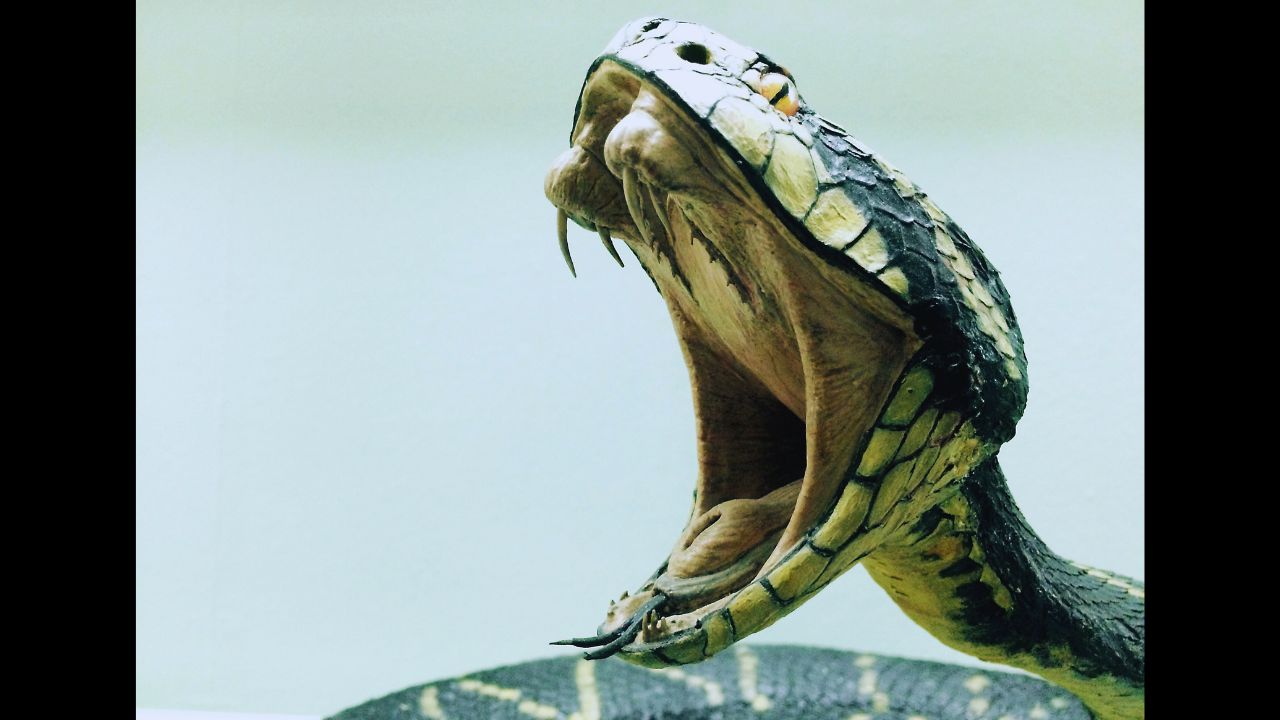
In situations when venom gets into the eyes, quick cleaning with water or a saline solution is crucial to avoid blindness. Though the venom of the cobra is less strong than that of some other African species, its capacity to spew poison from a distance makes it especially deadly in places where humans can unintentionally disturb it.
Notwithstanding these dangers, the Mozambique spitting cobra is crucial in reducing mouse and rat populations, which may endanger human health as well as agricultural output. These snakes may be helpful in rural locations where choices for pest control might be few. Minimizing harmful interactions depends on teaching people about the nature of these cobras and promoting careful cohabitation, nevertheless.
Conservation Condition
Not recognized as an endangered species right now is the Mozambique spitting cobra. Its great flexibility and range have enabled it to maintain steady population numbers throughout much of southern Africa. Long-term survival of this species may be threatened, nevertheless, by habitat damage brought on by urbanization, agricultural growth, and deforestation. The likelihood of conflict rises as human populations expand and intrude more into the snake’s native environment; typically, this leads to the killing of these snakes out of anxiety.
Promoting techniques of avoiding harmful encounters and teaching local people about the ecological relevance of the Mozambique spitting cobra should be the main priorities of conservation activities. Maintaining good numbers in the future will also depend critically on protecting the natural habitats of the snake, including wetlands and forests.

Remarkable in nature, the Mozambique spitting cobra is exactly suited for its habitat. Although its aggressive defensive action and poisonous character make it a frightening snake to come across, keep in mind that this cobra is rather essential for the ecology. Being a major player in the food chain and a predator of pests, it helps to maintain the balance and general health of the surroundings.
Minimizing conflicts and guaranteeing that this species may keep existing in the wild depends on an awareness of the behavior, habitat, and interactions with people of the Mozambique spitting cobra. Humans and cobras may cohabit the same areas with least damage by encouraging cooperation and appreciating the natural surroundings.



